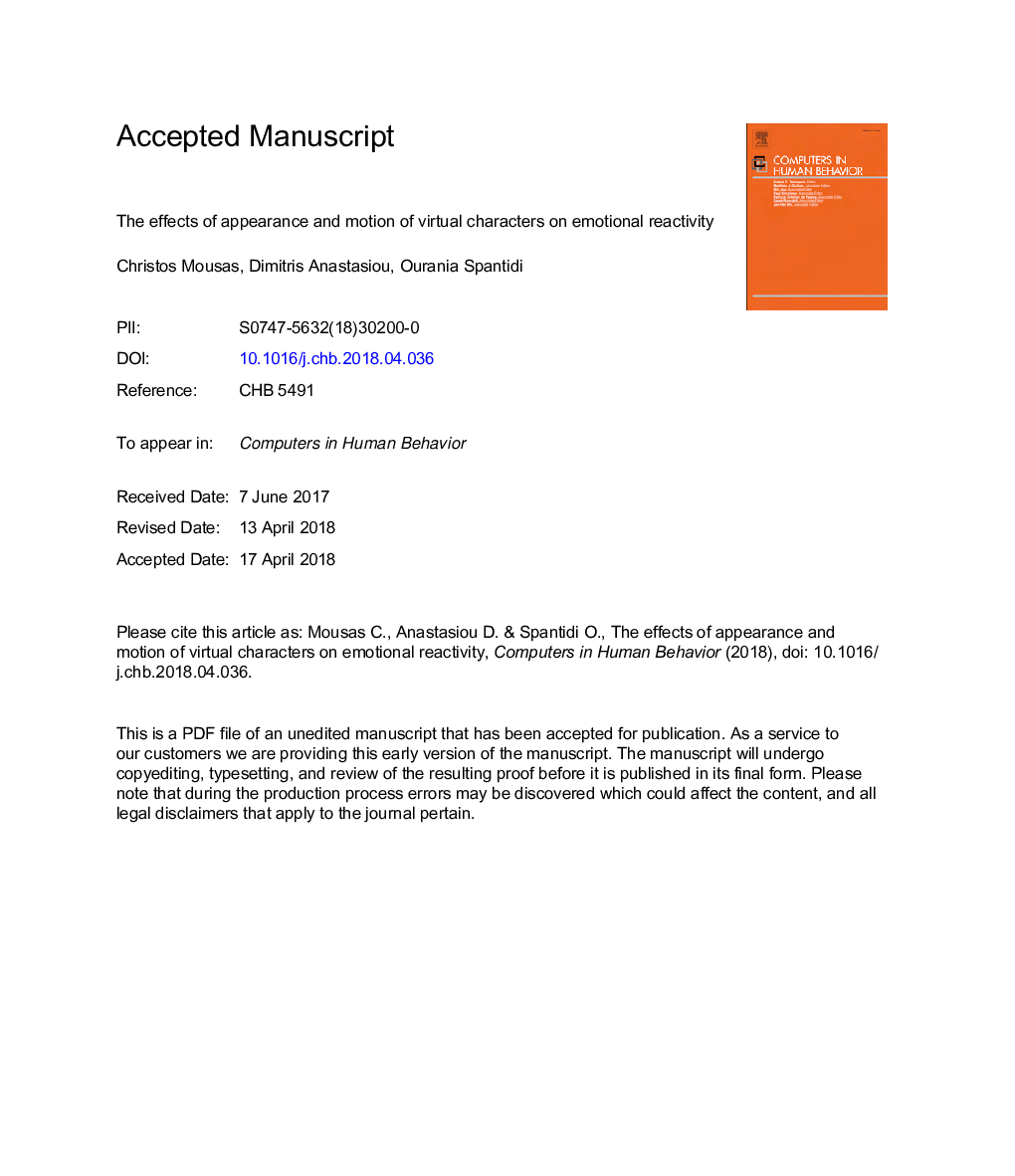| Article ID | Journal | Published Year | Pages | File Type |
|---|---|---|---|---|
| 6835831 | Computers in Human Behavior | 2018 | 15 Pages |
Abstract
The aim of this study was to examine the influence of appearance and motion of virtual characters on students' emotional reactions. We used four different virtual reality (VR) conditions with different combinations of appearance and motion: that is, a regular-male and zombie-male virtual character each assigned to low- and high-amplitude motion. Participants were asked to wear a head-mounted display (HMD) and observe the virtual content. Immediately after viewing each of the four stimuli, participants were asked questions about their emotional reactions in terms of reactivity (intensity) and subjective valence. Both the appearance and the motion of the virtual characters significantly affected participants' (a) emotional valence in a dynamic pattern and (b) emotional intensity, with reactions to subjectively aversive and/or active stimuli as more negative than reactions to neutral and/or passive stimuli. Females showed significantly higher levels of negative emotional intensity to all virtual characters and negative emotional valence (lower likeability) to aversive characters. Implications for further research, and gender and cultural considerations are discussed.
Related Topics
Physical Sciences and Engineering
Computer Science
Computer Science Applications
Authors
Christos Mousas, Dimitris Anastasiou, Ourania Spantidi,
